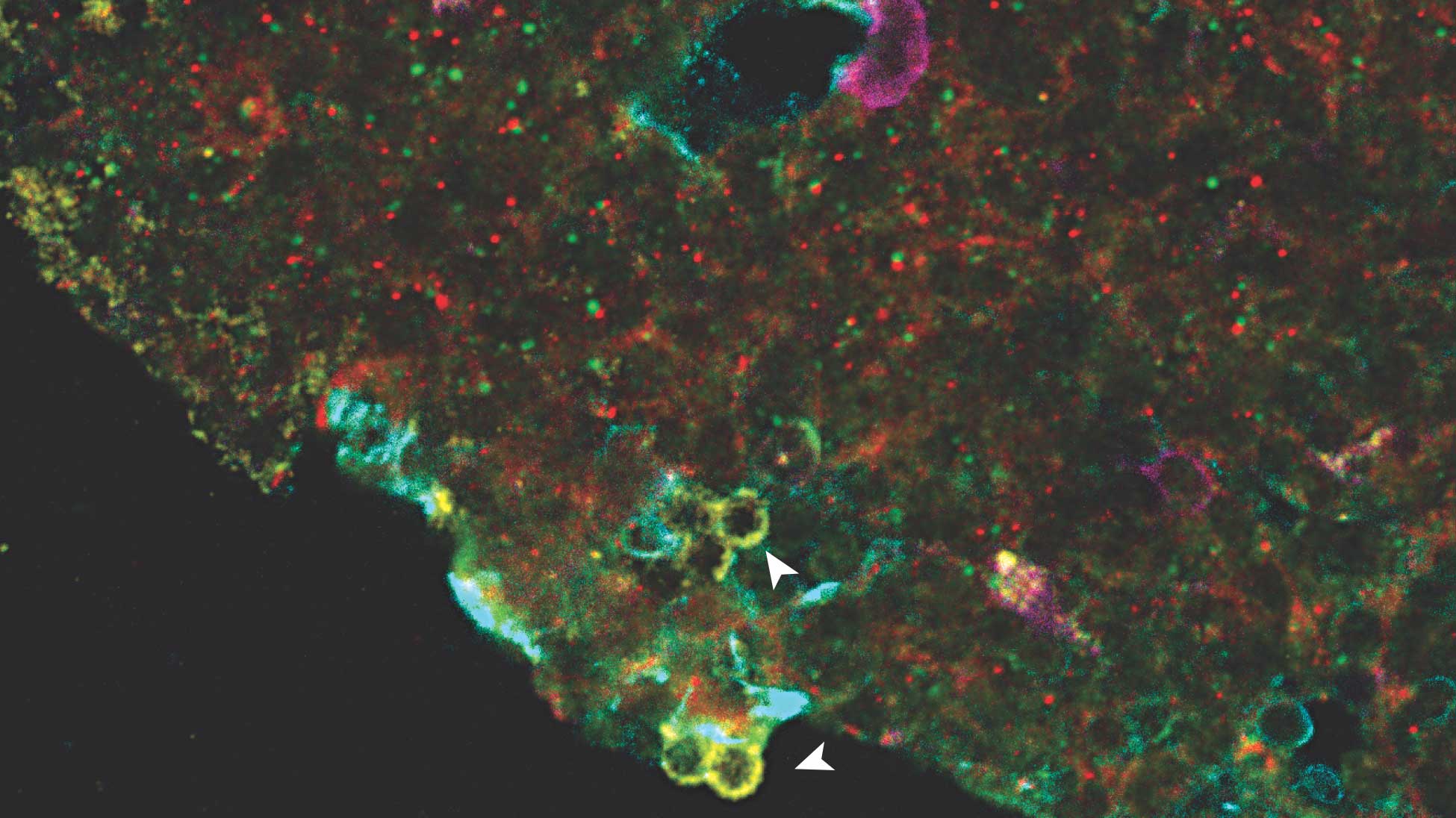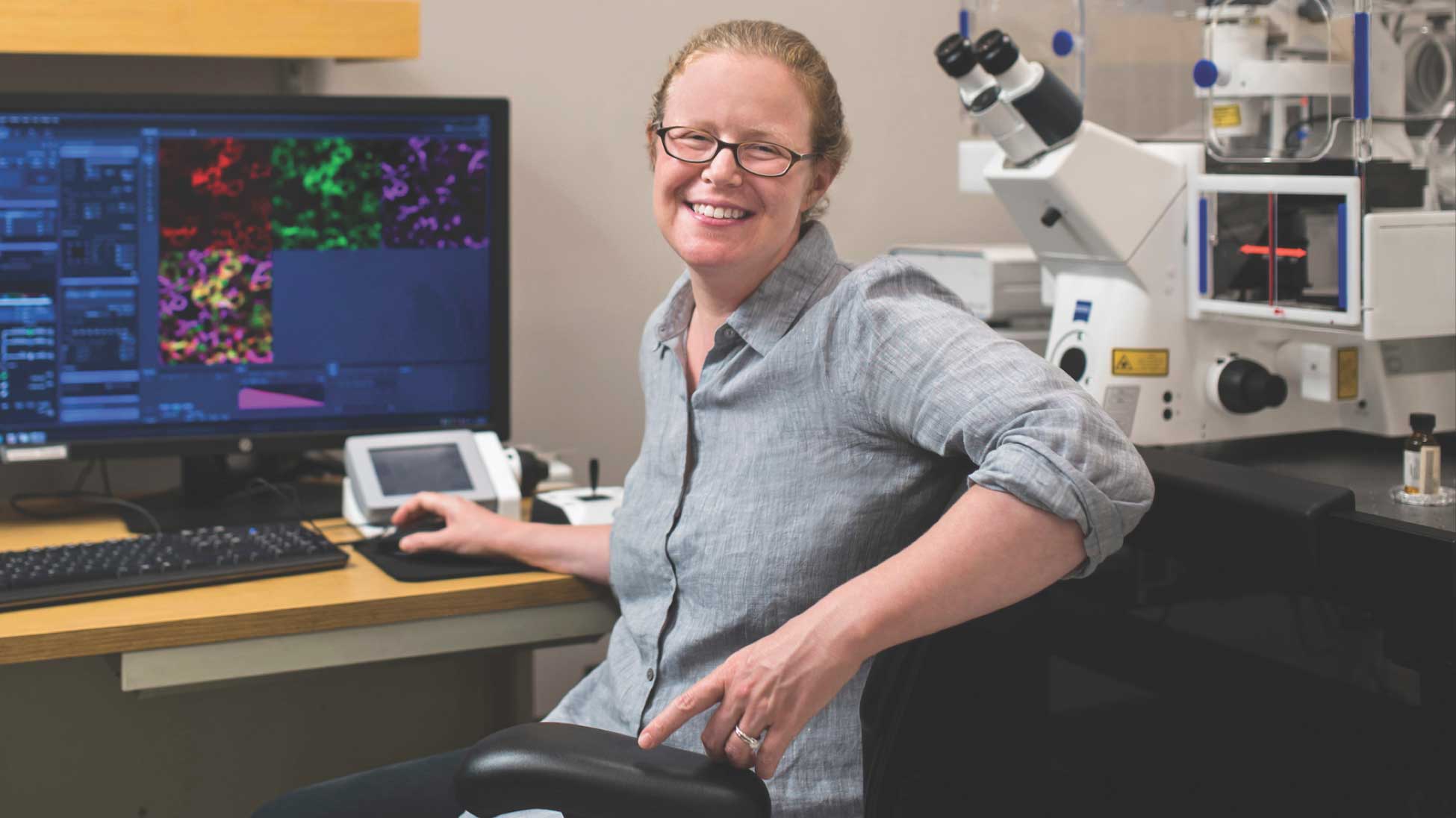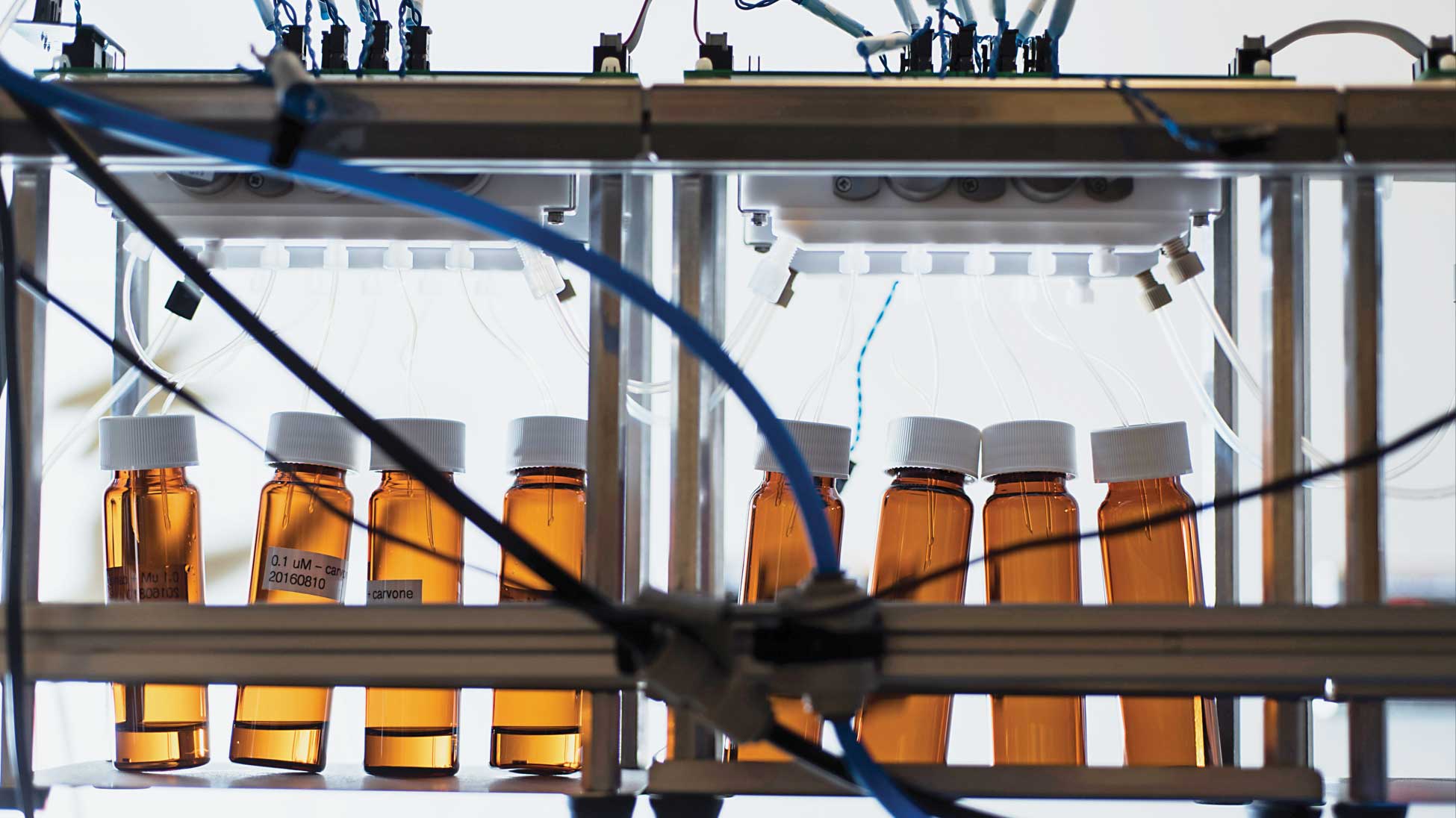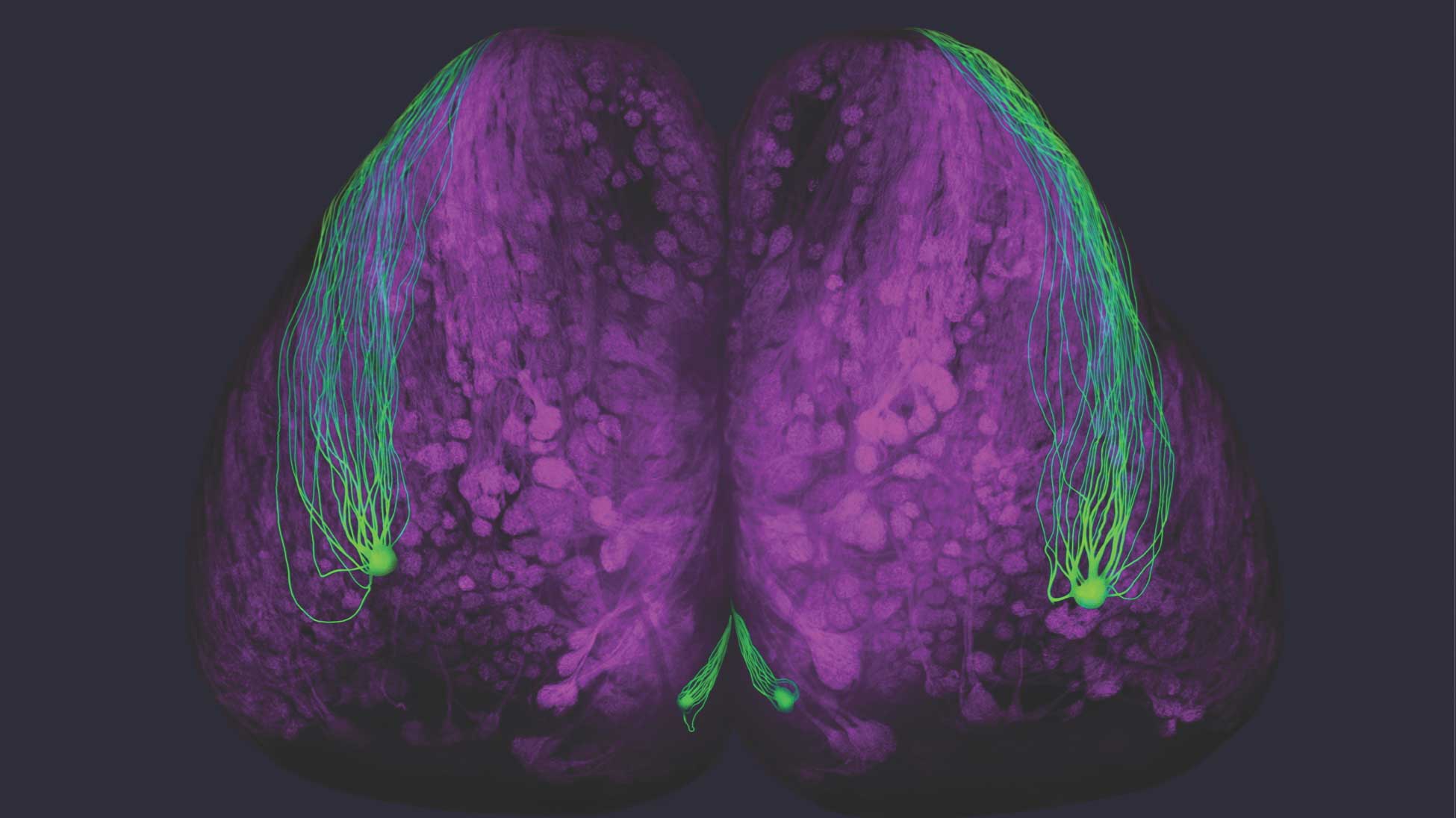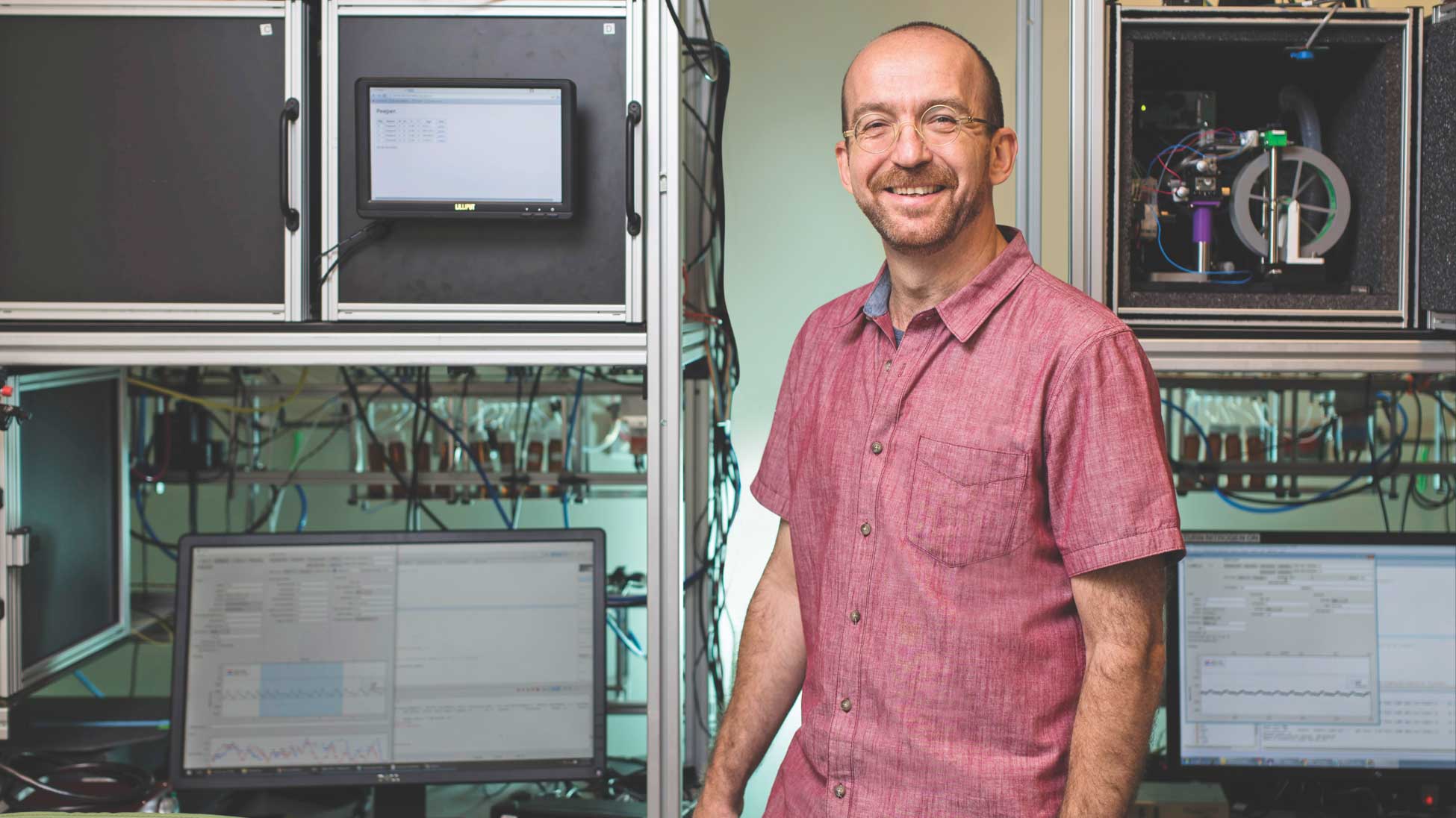
Cells in Their
Natural Habitats
In 1653, a 26-year-old self-educated prodigy named Robert C. Hooke was studying a thin slice of cork through the lens
of a homemade microscope when he was struck by an unusual pattern of compartments that he likened to misshapen honeycomb.
He dubbed the structures cells,
and scientists have been using the term ever since to describe the basic building blocks
of life. Today, remarkable advances in microscopy afford researchers a view of these building blocks that Hooke could
scarcely have imagined. At NYU Langone, such advances are helping biologists understand how a dizzying number of interactions
among the body's 30 trillion cells can spark disease.

- The Schwab Lab
- The Rinberg Lab
- The Schwab Lab
- The Rinberg Lab



